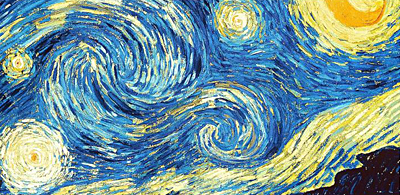Auctioning Mao: The Party’s Over
China’s most famous portrait of Chairman Mao Zedong is to be auctioned off by the country’s state-controlled auction house in Beijing. Commissioned in 1950 to celebrate the first anniversary of the People’s Republic of China, Zhang Zhenshi’s oil painting of Mao became a world famous image. The portrait of the communist leader was published in poster form, with untold millions of prints put into circulation, later a large copy of the painting was hung over Tiananmen Square – where it still hangs.
As the New York Times put it, “Mao’s likeness is believed to be one of the most widely reproduced images in the world,” it has even been referred to as China’s Mona Lisa. So it’s a bit of a shock to read that the painting will be sold at a June 3rd auction, where it’s expected to sell for a paltry $120,000. Perhaps we should show some sympathy for the bureaucrats of the Chinese Communist Party – I mean, they do seem quite determined to be good capitalists, they just don’t have this “art as commodity” thing worked out yet.
Given that a petite painting of a soup can by Andy Warhol recently sold at Christie’s for $11.7 million dollars, perhaps the new Mandarins will reconsider the starting price for the painting of the Great Helmsman before they put it on the auction block.
I’ll never forget the billboards in Los Angeles that advertised the 2002 Andy Warhol Retrospective at L.A.’s Museum of Contemporary Art; every time I think of those huge outdoor ads I kick myself for not having photographed them. In point of fact there were two different billboards, one based on Warhol’s print of Liz Taylor, the other on the artist’s rendering of Mao.

I recall standing before the Mao billboard on Sunset Boulevard and wondering – not only what the public would make of it – but of how the expropriation and depoliticization of an image could be so deftly and successfully pulled off. There on the streets of Hollywood stood a huge portrait that would otherwise be castigated by Westerners as mind control if it were displayed in China, but on the streets of L.A. it was just another billboard advertising a dead pop star.
By slight of hand, communist propaganda had been transformed into capitalist propaganda – and few if any noticed. That billboard surely must have confounded a number of people, since its Cheshire cat grinning Mao was simply accompanied with text that read “WARHOL The Museum of Contemporary Art 1-866-4-WARHOL.”
How many pedestrians and drivers passing those billboards were even aware of who Chairman Mao Zedong might have been – or who Andy Warhol was for that matter? Did they mistake the portrait of Mao as Warhol’s self-portrait? These are all unanswered questions here in the wastelands of the Hollywood dream machine, but as we witness the Chairman’s portrait being auctioned off to the highest bidder in Beijing… it is clear the Chinese government does not have the answers either.



